Themed collection Catalysis in the USA

Catalysis Science & Technology: Catalysis in the USA
Editorial for the themed issue “Catalysis in the USA”.
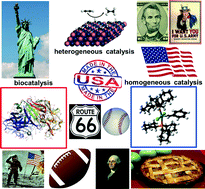
Catal. Sci. Technol., 2015,5, 1357-1359
https://doi.org/10.1039/C5CY90005K
Tailoring the physicochemical properties of zeolite catalysts
Here we summarize our recent findings in the area of zeolite synthesis, focusing on pathways to control crystallization in the absence of organics, tailoring crystal habit with growth modifiers, and pioneering techniques in zeolite surface science to elucidate the mechanisms of growth.

Catal. Sci. Technol., 2014,4, 3762-3771
https://doi.org/10.1039/C4CY00858H
Scaling relations between adsorption energies for computational screening and design of catalysts
Scaling relations simplify descriptions of surface reactivity by unifying the description of similar adsorbates, e.g. those that bind through C.
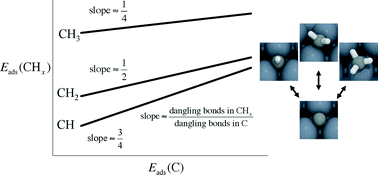
Catal. Sci. Technol., 2014,4, 3748-3761
https://doi.org/10.1039/C4CY00335G
Hydrophobic microporous and mesoporous oxides as Brønsted and Lewis acid catalysts for biomass conversion in liquid water
Microporous and mesoporous silicates with internal or external hydrophobic surfaces show differences in catalytic reactivity and stability in liquid water.

Catal. Sci. Technol., 2014,4, 2877-2886
https://doi.org/10.1039/C4CY00712C
Polyisobutylene oligomer-bound polyoxometalates as efficient and recyclable catalysts for biphasic oxidations with hydrogen peroxide
Oxidative desulfurization and alkene epoxidation proceed in heptane–water biphasic system through facile phase transfer of POM by amine terminated oligomer.

Catal. Sci. Technol., 2015,5, 818-821
https://doi.org/10.1039/C4CY01394H
Arene C–H activation using Rh(I) catalysts supported by bidentate nitrogen chelates
New Rh(I) complexes as precursors to efficient catalytic arene C–H activation in trifluoroacetic acid.
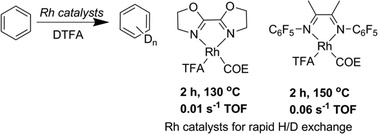
Catal. Sci. Technol., 2015,5, 96-100
https://doi.org/10.1039/C4CY00972J
CO oxidation on single and multilayer Pd oxides on Pd(111): mechanistic insights from RAIRS
Strong binding on oxygen vacancies and metallic domains promotes CO oxidation on partially-reduced PdO(101), while adsorption only on metallic sites promotes CO oxidation when 2D oxide coexists with Pd(111).
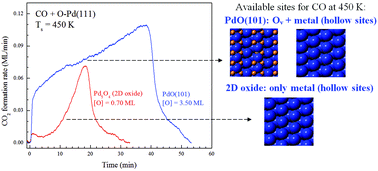
Catal. Sci. Technol., 2014,4, 3826-3834
https://doi.org/10.1039/C4CY00938J
P450-catalyzed asymmetric cyclopropanation of electron-deficient olefins under aerobic conditions
A histidine-ligated variant of P450-BM3 catalyzes cyclopropanation of a variety of electron-deficient olefins under ambient conditions with great selectivity.

Catal. Sci. Technol., 2014,4, 3640-3643
https://doi.org/10.1039/C4CY00633J
Plasmon-enhanced reverse water gas shift reaction over oxide supported Au catalysts
Visible light driven plasmon-enhanced reverse water gas shift reaction over Au/TiO2 catalysts for CO2 conversion.

Catal. Sci. Technol., 2015,5, 2590-2601
https://doi.org/10.1039/C4CY01183J
Ir–Re alloy as a highly active catalyst for the hydrogenolysis of glycerol to 1,3-propanediol
We report for the first time the synthesis of a Ir–Re alloy catalyst, which exhibits significantly improved activity in glycerol hydrogenolysis and enhanced resistance against particle sintering compared with a Ir–ReOx structured catalyst.

Catal. Sci. Technol., 2015,5, 1540-1547
https://doi.org/10.1039/C4CY01285B
Rational design of MoS2 catalysts: tuning the structure and activity via transition metal doping
Density functional theory is used to elucidate and understand the trends in hydrogen evolution activity of transition-metal doped MoS2 catalysts.

Catal. Sci. Technol., 2015,5, 246-253
https://doi.org/10.1039/C4CY01162G
Low-temperature aqueous-phase reforming of ethanol on bimetallic PdZn catalysts
Bimetallic PdZn catalysts supported on carbon black (CB) and carbon nanotubes (CNTs) were found to be selective for CO-free H2 production from ethanol at low temperature (250 °C).
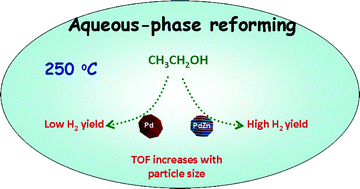
Catal. Sci. Technol., 2015,5, 254-263
https://doi.org/10.1039/C4CY00914B
Effects of temperature pretreatment on propane cracking over H-SSZ-13 zeolites
The effect of thermal treatment of SSZ-13 on catalytic activity has been investigated by using monomolecular propane conversion as a probe reaction.
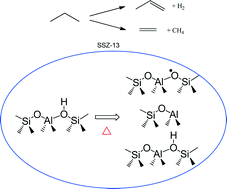
Catal. Sci. Technol., 2015,5, 264-273
https://doi.org/10.1039/C4CY00731J
The iso-VAPOL ligand: synthesis, solid-state structure and its evaluation as a BOROX catalyst
The iso-VAPOL ligand is just as effective as VAPOL in the catalytic asymmetric synthesis of aziridines at one-tenth the cost.
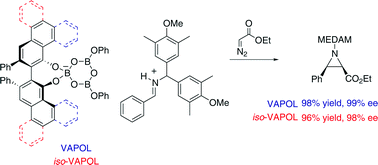
Catal. Sci. Technol., 2014,4, 4406-4415
https://doi.org/10.1039/C4CY00742E
Evidence for geometric effects in neopentane conversion on PdAu catalysts
Silica-supported Pd and Pd(shell)/Au(core) nanoparticles of a similar size were evaluated for neopentane conversion.
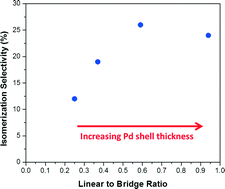
Catal. Sci. Technol., 2014,4, 4366-4377
https://doi.org/10.1039/C4CY00846D
Towards highly selective ethylene epoxidation catalysts using hydrogen peroxide and tungsten- or niobium-incorporated mesoporous silicate (KIT-6)
Nb- and W-KIT-6 materials display significant ethylene epoxidation activity with H2O2 as the oxidant at mild temperatures that eliminate substrate burning.
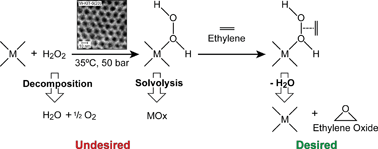
Catal. Sci. Technol., 2014,4, 4433-4439
https://doi.org/10.1039/C4CY00877D
Implications of coverage-dependent O adsorption for catalytic NO oxidation on the late transition metals
Cluster-expansion-based kinetic model reveals that adsorbate interactions both promote and inhibit NO oxidation on the late transition metals.

Catal. Sci. Technol., 2014,4, 4356-4365
https://doi.org/10.1039/C4CY00763H
Palladium catalyzed aryl C–H amination with O2via in situ formation of peroxide-based oxidant(s) from dioxane
Intramolecular Pd-catalyzed aerobic oxidative amination of an aryl C–H bond is promoted by in situ generation of dioxane-derived hydroperoxide under the aerobic conditions.

Catal. Sci. Technol., 2014,4, 4301-4307
https://doi.org/10.1039/C4CY00764F
Theoretical investigation of the hydrodeoxygenation of methyl propionate over Pd (111) model surfaces
Theoretical study of the hydrodeoxygenation of methyl propionate over Pd (111) model surfaces.

Catal. Sci. Technol., 2014,4, 3981-3992
https://doi.org/10.1039/C4CY00511B
Correlating lignin structure to aromatic products in the catalytic fast pyrolysis of lignin model compounds containing β–O–4 linkages
Lignin model compounds containing a β–O–4 linker were synthesized to investigate the role of lignin structure and zeolite type on the product distribution during catalytic fast pyrolysis.

Catal. Sci. Technol., 2014,4, 3953-3963
https://doi.org/10.1039/C4CY00569D
An ab initio thermodynamics study of cobalt surface phases under ethanol steam reforming conditions
A combination of DFT and ab initio atomistic thermodynamics study illustrated the surface structure evolution of Co0/Co2+ catalysts under ethanol steam reforming conditions.
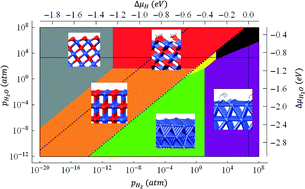
Catal. Sci. Technol., 2014,4, 3379-3389
https://doi.org/10.1039/C4CY00582A
Catalytic propane reforming mechanism over Zr-doped CeO2 (111)
A reforming path for propane over Zr-doped ceria is established, along with determination of the active surface under reaction conditions.

Catal. Sci. Technol., 2014,4, 3278-3289
https://doi.org/10.1039/C4CY00619D
In situ diffraction of highly dispersed supported platinum nanoparticles
In situ synchrotron diffraction in H2 reveals structural and microstructural details of supported 1–2 nm Pt nanoparticles.
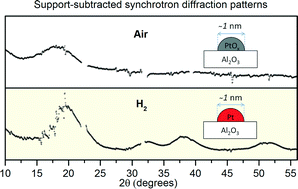
Catal. Sci. Technol., 2014,4, 3053-3063
https://doi.org/10.1039/C4CY00414K
Thermally stable gold/alumina aerogel catalysts prepared by a simultaneous synthesis process for solvent-free aerobic benzyl alcohol oxidation
Gold nanoparticles physically trapped in the framework of alumina aerogel exhibit excellent thermal stability and catalytic activity at high temperature.

Catal. Sci. Technol., 2014,4, 2520-2525
https://doi.org/10.1039/C3CY01064C
Study of the local structure and oxidation state of iron in complex oxide catalysts for propylene ammoxidation
A combination of X-ray absorption, Raman and UV-visible spectroscopy reveals the competing redox reactions during the deactivation of Fe-based complex catalysts.

Catal. Sci. Technol., 2014,4, 2512-2519
https://doi.org/10.1039/C4CY00197D
About this collection
This web theme highlights the excellent work being carried out by the catalysis community in the USA. Guest edited by Professors Robert Rioux (Pennsylvania State University, USA) and Dean Toste (University of California, Berkeley, USA), these articles focus on all areas in catalysis, including homogeneous and heterogeneous catalysis, organocatalysis and biocatalysis, and range from industrial applications to fundamental understanding of catalytic mechanisms.
Articles in this web collection will be added below as soon as possible after they are published. Please return to this page frequently to see the collection grow.